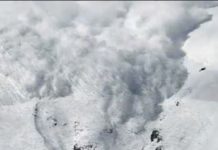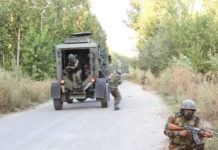
Photo: Shailendra Pandey
THEY SCREAMED and waved their guns as they set the granary on fire,” says Sanni, a tribal woman in south Chhattisgarh, standing by the burnt-out heap that was her harvest until two nights ago. “My son ran away and isn’t back.” He was lucky. The attackers took away two other villagers. No, says Sanni, the attackers weren’t Naxals, the Maoist rebels who have waged an armed rebellion for three decades. “They were from Salwa Judum,” she says.
Ten weeks after the police and members of the Salwa Judum, a controversial police-backed militia, killed 19 people early January in the forests of the neighboring Dantewada district, NGOs have reported a spurt in such attacks at places in south Chhattisgarh. Sanni’s village is in Bijapur district, which was carved out of Dantewada last August. Her village is located 5km north of the Indravati, one of the three big rivers in the region. The two districts together have thickly forested plains and hills across an area in excess of 15,000 sq km. They are also the parts of India most heavily affected by the Naxals.
This is decidedly ghost country. As we cross the river where it is thigh-deep to enter what is referred to on both sides as the ‘war zone’, village upon village appears abandoned. “For fear of the Salwa Judum,” explains one of our fixers. They are accompanying us to a meeting with a Naxal leader, Rengam, whose “jurisdiction”, as a leader of the underground Communist Party of India (Maoist), it is claimed, covers about 75 to 100 villages.
The Naxal superstructure is said to resemble a batch of concentric circles: the innermost being the most powerful leadership, located in the remotest forests, forever on the move. The ‘zone’, ‘area’ and ‘range’ commanders people the middle: the levels of the classic pyramid management structure. These are reportedly the backbone: the hands-on, day-to-day direct leaders of the cadres, leading assaults and tracking the goings-on in the villages on their watch. The outermost circles comprise the ‘sympathisers’, who do not wear uniforms, freely interface with the “outside world” on the basis of their identity of the average villagers, but are the “eyes and ears”, the runners for the “brothers” inside. When police claim they have killed or arrested Naxals, it is believed they are mostly these outermost cadres. Of course, the Naxals claim that the police arrest or kill only the innocent people.
[box]
Naxals Claim
• Chhattisgarh police forced the tribals to join the Salwa Judum militia and take up arms
• Salwa Judum burnt crops and homes, raped and killed women, forcing people to move to camps
• Those who want to go back to their villages are threatened
Government Says
• Naxals burn villages and kill tribals but falsely accuse Salwa Judum of their crimes
• Naxals oppose development, including schools and hospitals
• The police have been tasked to finish off the Naxals
[/box]
After walking three hours with the “sympathisers”, we were made to rest another two, and then handed over to a new group whose members, though not in uniform, wore shoes (the average tribal walks barefoot), carried a radio transistor, and held sharp, curved knives. Two of the five had guns under their arms. It was only at 6pm, 10 hours after we started walking, that we reached a village where a group of 20, led by Rengam, was waiting for us. As we later returned to our base station that night, walking back the 20km through the dark jungles, a fixer laughed, “Neither the Naxals nor the Salwa Judum would believe that you outsiders were boldly walking here this late.”
Two days later, a day after Holi, we got word that another set of Naxals was waiting to meet us elsewhere in the Dantewada district. As this was an outlying area with a far greater chance of the police, the paramilitary and the Salwa Judum turning up, a much stricter “sanitising” procedure was employed before we could be face to face with Kunjam, another Naxal leader (See interview). Here, the mystery of the transistor was solved. As it was abruptly switched on and a Hindi film song pierced the stillness, the Naxal leader appeared in two minutes. It was a signal for him.












